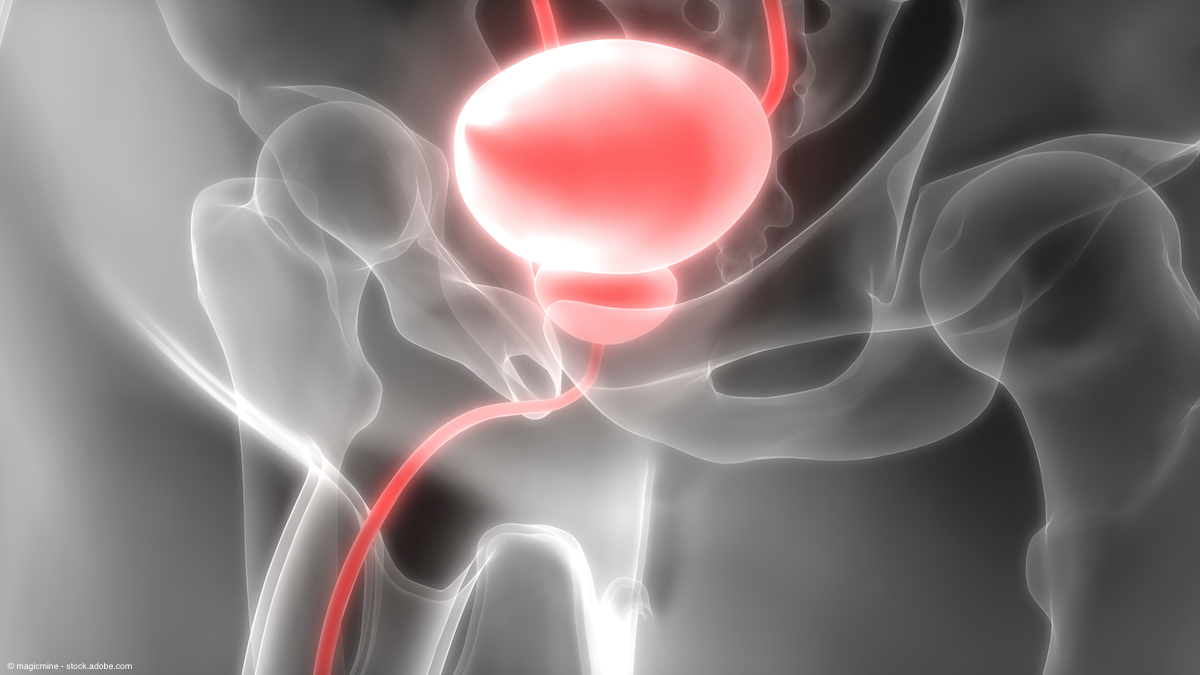News
Article
AI-based model shows promise in detecting luminal urothelial carcinoma
Author(s):
The model may help identify patients with urothelial carcinoma who could benefit from PPARG inhibition through FX-909, a first-in-class small molecule inhibitor of PPARG.
Investigators have developed a novel artificial intelligence (AI)-based model that can accurately identify patients who have luminal muscle invasive urothelial carcinoma (MIUC), characterized by high expressions of peroxisome proliferator-activated receptor gamma (PPARG), and therefore may benefit from therapy with PPRAG inhibition.
Across the test, validation, and independent datasets, the model was able to correctly classify advanced urothelial carcinomas of the luminal subtype.

The data were presented at the 2023 AACR-NCI-EORTC International Conference on Molecular Targets and Cancer Therapeutics in Boston, Massachusetts.1
For the study, investigators analyzed 367 H&E-stained slides from unique MIUC cases from the Cancer Genome Atlas Urothelial Bladder Carcinoma dataset, and 42 slides from MIUC cases from an independent dataset. Across the test, validation, and independent datasets, the model was able to correctly classify advanced urothelial carcinomas of the luminal subtype.
The end-to-end learning tool was developed in a partnership between Flare Therapeutics and PathAI. According to Flare Therapeutics, the model may help identify patients who could benefit from PPARG inhibition through their investigational compound FX-909, a first-in-class small molecule inhibitor of PPARG.2
"We conducted machine-learning driven analyses of digital images from H&E-stained tissues to identify patients with luminal MIUC," said Michael Montalto, Chief Scientific Officer at PathAI, in a news release on the findings.2 "We are highly encouraged by the initial results relative to current molecular approaches and look forward to collaborating with the Flare Therapeutics team to evaluate the performance of this novel algorithm in support of the FX-909 program. The model could have tremendous utility in helping to improve MIUC patient outcomes. It was a pleasure to work closely with the Flare Therapeutics team and apply our model to a real-world application."
FX-909 is currently being studied in a phase 1 dose escalation clinical study (NCT05929235) to assess the safety, tolerability, pharmacokinetics, pharmacodynamics, and clinical activity of the compound in 75 patients with MIUC. Participants will be treated with FX-909 in 28-day cycles in a 3+3 design.
The first phase of the trial will assess dose-limiting toxicities and adverse events associated with FX-909 to determine a recommended phase 2 dose. Once established, a monotherapy expansion phase will be initiated to further evaluate the safety, tolerability, pharmacokinetics, pharmacodynamics, and clinical activity of FX-909. Patient outcomes will be assessed throughout study completion, anticipated as an average of 3 years.3
"The digitization of pathology has ushered in a new era of AI and machine learning that can inform patient diagnosis and guide clinical decision-making. We are excited to be at the forefront of applying these innovative biomarker approaches to identify patients with advanced urothelial cancer that may potentially respond to PPARG inhibition," said Michaela Bowden, Chief Development Officer at Flare Therapeutics, in the news release on the findings.2 "High PPARG expression is a defining feature of luminal MIUC, accounting for approximately 65% of cases in the advanced and metastatic setting. The ability to further stratify patient subsets could offer a powerful tool to inform the path forward for therapy that could include Flare Therapeutics' lead investigational compound, FX-909."
References
1. AI analysis of histological images accurately identifies luminal subtype urothelial carcinomas characterized by high PPARG expression. Presented at the 2023 AACR-NCI-EORTC International Conference on Molecular Targets and Cancer Therapeutics. October 11-15, 2023. Boston, Massachusetts. Abstract B016
2. Flare Therapeutics presents novel, AI-based method identifying luminal subtype of urothelial cancer supporting lead asset FX-909 at the 2023 AACR-NCI-EORTC International Conference on Molecular Targets and Cancer Therapeutics. News release. Flare Therapeutics. October 13, 2023. Accessed October 17, 2023. https://www.prnewswire.com/news-releases/flare-therapeutics-presents-novel-ai-based-method-identifying-luminal-subtype-of-urothelial-cancer-supporting-lead-asset-fx-909-at-the-2023-aacr-nci-eortc-international-conference-on-molecular-targets-and-cancer-therapeutics-301955755.html
3. National Institutes of Health US National Library of Medicine ClinicalTrials.gov. A study of FX-909 in patients with advanced solid malignancies, including advanced urothelial carcinoma. Last updated September 18, 2023. Accessed October 17, 2023. https://clinicaltrials.gov/study/NCT05929235
















